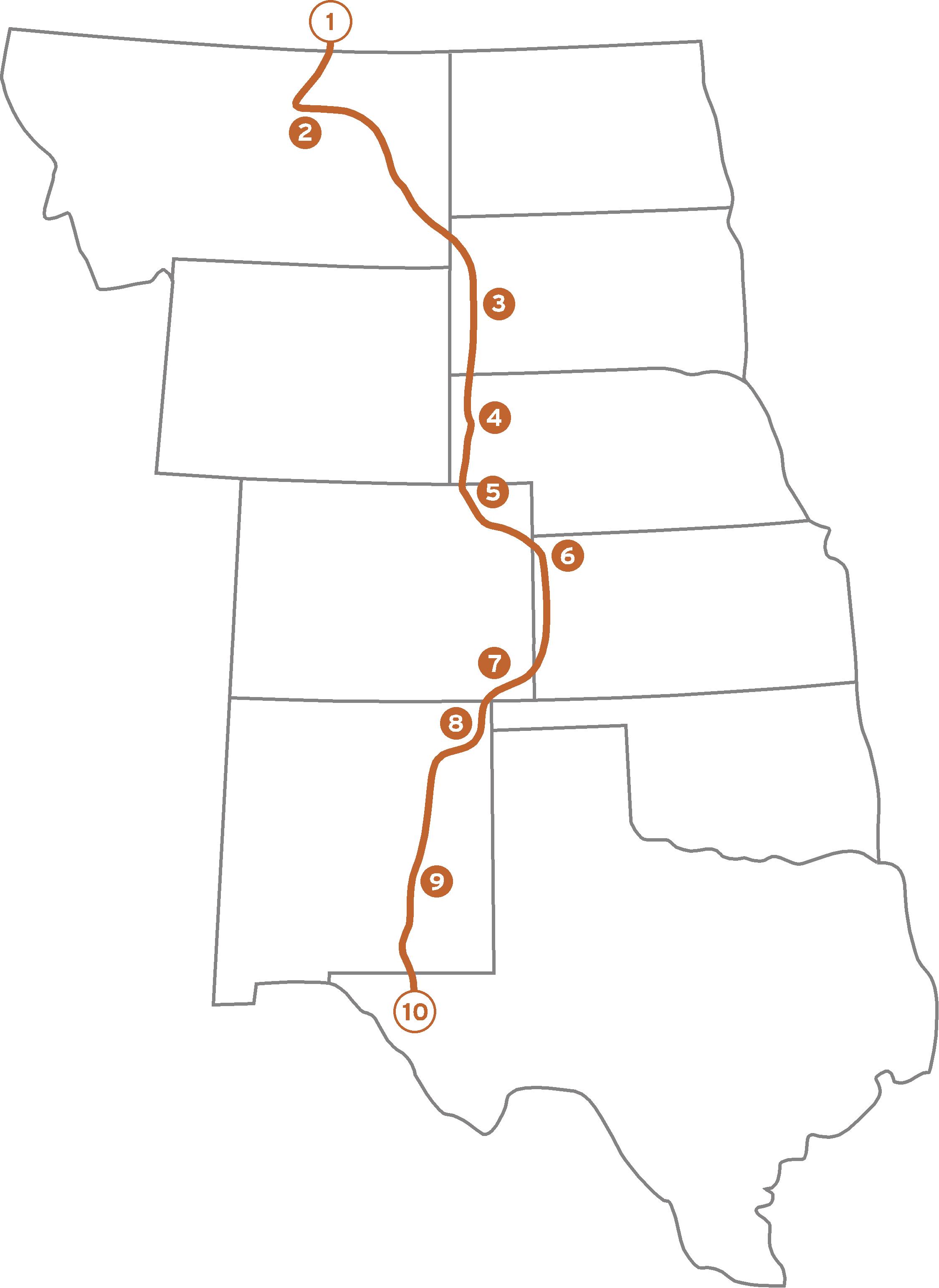 Continuing our look at rivers that cross the Great Plains Trail, as we head south, the next major river after the Missouri is none other than the majestic Yellowstone. The Yellowstone is about 700 miles long from where it begins in Yellowstone National Park to its confluence with the Missouri in western North Dakota. It is the longest undammed river in the lower 48 states, and if my memory serves me correctly, I believe it is the only undammed major river in the West. Which is not to say it flows as freely as it once did. It is heavily used for irrigation purposes in eastern Wyoming, eastern Montana, and western North Dakota.
Continuing our look at rivers that cross the Great Plains Trail, as we head south, the next major river after the Missouri is none other than the majestic Yellowstone. The Yellowstone is about 700 miles long from where it begins in Yellowstone National Park to its confluence with the Missouri in western North Dakota. It is the longest undammed river in the lower 48 states, and if my memory serves me correctly, I believe it is the only undammed major river in the West. Which is not to say it flows as freely as it once did. It is heavily used for irrigation purposes in eastern Wyoming, eastern Montana, and western North Dakota.
That said, there is something powerful about the Yellowstone River that quickens your heart rate by just gazing at it. If you want to experience this power first hand, there is no better place than where it begins. As the river exits Yellowstone Lake, it meanders peacefully through the relatively flat Hayden Valley before coming to the first of two incredible drops. The first drop is about 100 feet and is known as the Upper Falls. Although the Upper Falls is much less famous than the massive Lower Falls, I find the Upper Falls to be just as invigorating and lively.
Just a quarter of a mile later is the 300 foot drop known as the Lower Falls. Along with Old Faithful, this is one of the signature scenes of the park. It has been sketched, painted, photographed and video taped by millions of visitors over the centuries. This enormous drop forms the upper end of the Grand Canyon of the Yellowstone whose walls contain the yellowish rock for which the park is named.
These are some of the most impressive and spectacular places that any river in the world could hope to claim, but I submit to you that although the Yellowstone may lose some of its velocity and drama as it heads eastward for the plains, it loses none of its power to enchant and inspire.



5 Responses
It’s a wonderful river indeed. The stretch along the plains west of Billings is underappreciated.
Lots of history in those tributaries too: the Rosebud, the Bighorn, the Powder.
FWIW, the Yampa is also undammed, but considerably shorter.
Indeed. Good to know. I wasn’t sure, and the Yampa is certainly a major river. It can get HUGE in spring runoff!
You can thank the “conservation” movement of the 1950s for the Yampa. As it turns out, you can thank Montana fly fishers for the Yellowstone.
Interesting facts and pictures I learn a lot of information just reading your blogs
Once a teacher, always a teacher . . . 😉